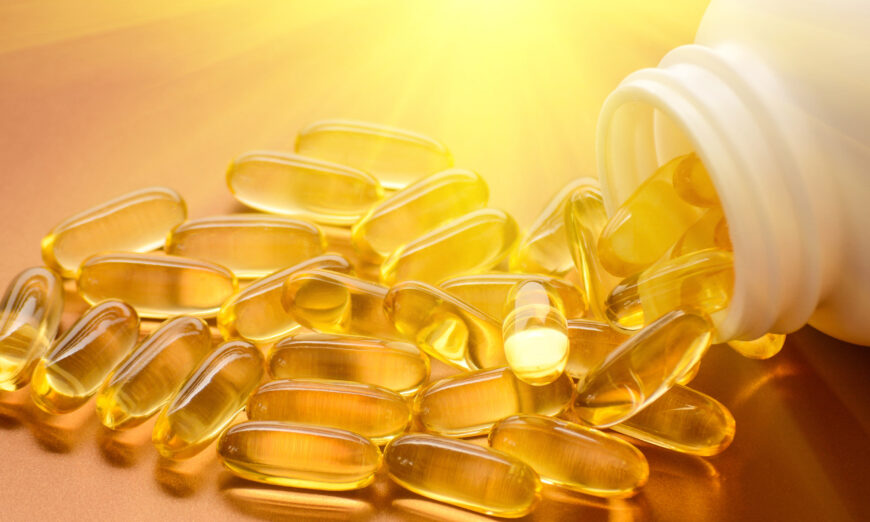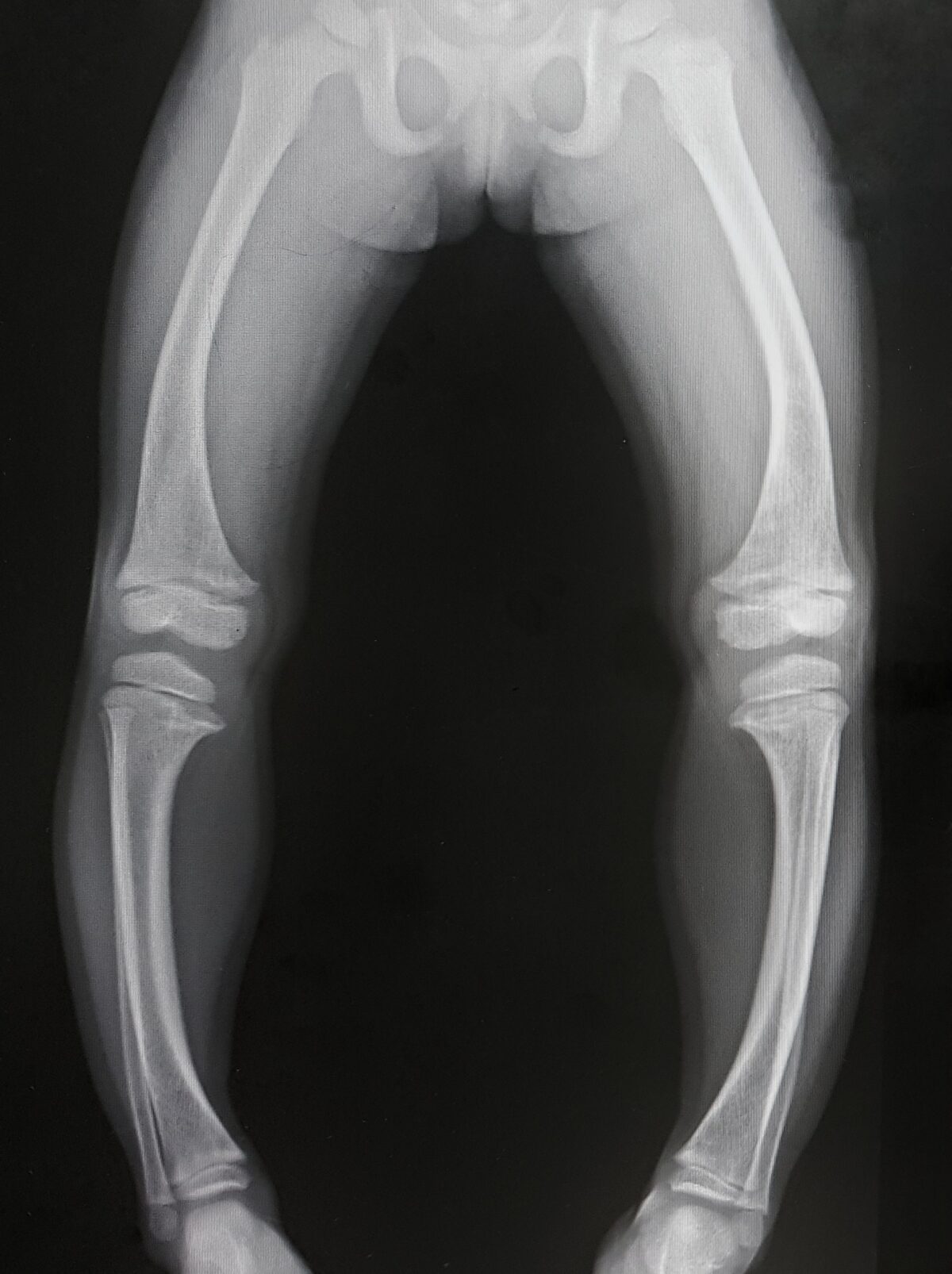
Vitamin D is a popular yet arguably controversial supplement. One reason for the controversy is that people are concerned about suffering from toxicities if they take over the commonly recommended amount.
Some of this concern is merited: vitamin D is fat-soluble, meaning that compared to water-soluble vitamins such as B-group vitamins and vitamin C, it is stored in the body for a much longer time, which can put people at a higher risk of toxicity.
On the other hand, as vitamin D deficiency has been deemed an epidemic, more people consider supplementing with it. Therefore, compared to other fat-soluble vitamins like vitamins A, K, and E, it will naturally be subject to a higher level of scrutiny.
Yet experts argue that the toxicities of vitamin D have been overstated, with much of the current fear stemming from historical reports and outdated information.
Historical Cases Fuel Current Fears
Much of today’s fear of toxicities comes from decades-old clinical research, reasoned endocrinologist Dr. Michael Holick in his commentary titled, “Vitamin D Is Not as Toxic as Was Once Thought: A Historical and an Up-to-Date Perspective.”
Before the discovery of vitamin D in the late 1920s, rickets, a disease where children developed bowed legs, was a common problem in Europe and the East Coast of the United States.
The implementation of vitamin D fortification started once people realized that vitamin D could prevent rickets in the 1930s. This was met with great success; children who drank fortified milk no longer developed rickets, which led to vitamin D fortification becoming widespread in Western countries.
The first reports of vitamin D toxicities came in the 1940s. Since vitamin D also regulates the immune system and reduces inflammation, it was used to treat rheumatoid arthritis and tuberculosis, often at massive doses of 100,000 to 600,000 international units (IU) per day.
It is unknown why these doses were decided. But while some people reported miraculous effects of improvement, there were also fearful reports of elevated levels of calcium from vitamin D toxicity. Some developed kidney stones, calcification in the kidneys, or, even died from complications of toxicities.
Physicians were alerted about the toxicities of vitamin D and the treatment was stopped, but it took months to years for manifestations of the intoxication to resolve.
Then in the early 1950s, several infants were born with facial abnormalities, heart defects, mental retardation, and hypercalcemia. Two investigations concluded that it was likely caused by excessive intakes of vitamin D through fortified foods including milk (1, 2).
This conclusion was based on literature that reported that pregnant rodents that received intoxicating doses of vitamin D delivered pups with the same abnormalities.
As a result of this, the fortification of any food or produce with vitamin D was forbidden in Great Britain. The concern of toxicity in children led most of the world—except the United States, Canada, Australia, and a few European countries—to also ban vitamin D fortification.
In retrospect, however, Holick speculated that it is likely that these infants suffered from genetic problems that made them averse to vitamin D, including Williams syndrome and other conditions that impair the breakdown of vitamin D.
Nonetheless, the concept that vitamin D is one of the most toxic fat-soluble vitamins “has been instilled in the psyche of health regulators and the medical community,” Holick wrote.

Vitamin D Toxicity and Tolerance Levels May Be Higher
Surgeon and physician Dr. Joseph Bosiljevac has been in practice for more than 20 years. He observed that most of the guidelines on vitamin D recommendations have not changed over the decades.
This may also be a sign of unchanged notions about the vitamin’s toxicity.
From the 1980s until 2011, the general recommendation for daily vitamin D intake was 400 IU.
In 2011, the Institute of Medicine (IOM) increased the daily intake to 600 IUs for anyone between the ages of 1 and 70. The recommendation persists today and was made under the assumption that people would fulfill most of their vitamin D needs through sun exposure.
Many medical providers and academics alike have criticized the IOM’s daily recommendations for being far too low.
According to the IOM, a person would be considered to meet vitamin D adequacy once their vitamin D serum levels reach 20 ng/ml. Around 100 IUs of vitamin D would increase serum levels by 1 ng/ml. A dose of 600 IUs of dietary vitamin D would translate to 6 ng/ml, therefore the guidelines assume that the rest of vitamin D would be mostly fulfilled through sunlight.
Yet times have vastly changed, says William Grant, who has a doctorate in physics and has published over 200 papers on vitamin D. Grant is also the director of the Sunlight, Nutrition, and Health Research Center. He argues that most people do not spend enough time in the sun to produce adequate vitamin D.
The body produces around 1,000 IU of vitamin D after 10 to 15 minutes of sun exposure. This only happens under broad sunlight, otherwise, it takes even longer.
Most people also wear sunscreen these days, and since the start of the pandemic in 2020, people have spent an increasingly longer time at home. These factors combined drastically reduce a person’s chances of sun production, and reaching adequacy through diet alone is quite difficult.
Grant also argued that most people may be able to tolerate significantly higher levels of vitamin D than the guideline amount.
The guideline shows 50 ng/ml is the upper limit of serum level. However, according to a 2018 review in Frontiers in Endocrinology, symptoms of intoxication start to appear once serum levels for vitamin D reach 150 ng/ml or over, translating to 15,000 IUs of vitamin D daily.
This is over seven times the official recommendation for serum vitamin D levels.
Grant also pointed to a 2011 report that followed two patients who developed hypercalcemia after ingesting more than 900,000 IUs of vitamin D3 every day.
The first patient was the most extreme case. Due to errors in manufacturing and labeling, he ingested over 1.8 million IUs of vitamin D3 daily for two months and developed hypercalcemia, presenting with a vitamin D serum level of 1,220 ng/ml.
Unexpectedly, the two patients were asymptomatic and no longer hypercalcemic once their vitamin D serum levels fell to below 400 ng/ml, which is 20 times the National Institutes of Health’s recommended cut-off.
Both patients recovered without any complications.
Vitamin D Toxicity Report Increased in Recent Years for Various Reasons
Toxicity does pose a problem that cannot be overlooked.
With over 41 percent of the American population vitamin D deficient, vitamin D treatment has seen increased use over the years, and reports of toxicity have also increased.
A study that followed vitamin D exposures reported to the U.S. poison centers from 2000 to 2014 observed a 1,600 percent increase in reports from 2005 to 2011.
The report also found that despite increased reports over the years, the increase in severe outcomes has not been statistically significant.
Literature reports of vitamin D toxicities have also increased since 2010.
A 2018 review article stated that vitamin D toxicities are usually due to prescription errors, accidental ingestion of toxic levels of vitamin D due to product mislabeling, and increasing use of high-dose supplemental products.
Hypercalcemia: The Main Concern of Vitamin D Toxicity
Vitamin D increases the gut’s ability to absorb calcium through the diet; a major consequence of vitamin D toxicity is abnormally high levels of calcium in the blood, also known as hypercalcemia.
According to the Frontiers in Endocrinology review, common symptoms of hypercalcemia include confusion, apathy, recurrent vomiting, abdominal pain, excessive urination and thirst, as well as muscle and bone pain.
In severe cases, it can cause calcification of soft tissue and kidney stones, and deaths have also been reported in very extreme cases.
However, hypercalcemia is rare, and clinical complications of hypercalcemia are even rarer.
Board-certified internist Dr. Ana Mihalcea, who provides vitamin D injections as part of her clinic’s treatment, said that she has yet to see any of her patients develop toxicities from vitamin D injections.
Dr. Patrick McCullough, a board-certified internist who has published several papers on the use of vitamin D in treatment—especially high-dose vitamin D—told The Epoch Times that most of the hypercalcemia he has observed is easily reversible.
Given the large tolerance margin for vitamin D doses, McCullough argued that vitamin D deficiency poses a higher risk.
3 Factors That Increase Risk of Toxicity
1. Mislabeling and Prescription Errors
Mislabeling by manufacturers and prescription errors are the driving forces behind today’s toxicity levels.
Supplements are not subject to regulation by the U.S. Food and Drug Administration (FDA) for their safety, effectiveness, or labeling. Some have dosages that do not match the labeled dosage, often with instructions on dietary intake that are either insufficient or potentially toxic.
In the case report by Holick, the patient consumed vitamin D3 “more than 1,000 times what the manufacturer had led the patient to believe he was ingesting,” the author wrote.
Mistakes in prescription regarding the time between each intake, as well as dosage per intake, have also resulted in vitamin toxicities; therefore, it is always important to verify doses with pharmacists and health care professionals before supplementation.
2. Drug Interactions
Certain drugs or supplements may interact with vitamin D supplementation, leading to toxicities and hypercalcemia.
Taking calcium or ingesting dairy with vitamin D may elevate calcium levels in the blood.
Certain diuretics, which reduce fluid in the body, can concentrate calcium. Taking lithium may also increase the risk of vitamin D toxicity.

3. Genetic Factors
Genetic factors can also put certain people more at risk of vitamin D toxicity.
Certain hereditary diseases such as Williams syndrome and familial hypocalciuric hypercalcemia make a person start with a higher calcium level, thus making them susceptible to toxicity.
Sarcoidosis and 24-hydroxylase deficiencies result in elevated vitamin D levels, which in turn increases calcium.
Ways to Reduce Vitamin D Toxicity
Some of the easiest ways to reduce the risk of developing hypercalcemia include drinking water and taking supplements like vitamin K2 and magnesium.
Drinking six to eight glasses of water per day dilutes the calcium concentration in the blood and can reduce the risk of hypercalcemia.
Taking both vitamin K2 and magnesium with vitamin D can reduce calcium levels in the blood by directing it into the bone.
It is also very important for individuals to take vitamins at the dosage most suitable for them.
Some of Mihalcea’s patients would present with a baseline vitamin D level of 30 ng/ml, yet display signs of deficiency, including fatigue and problems with sleeping and concentration.
Some of these patients’ symptoms alleviate once their vitamin D serum levels are increased to 70 ng/ml or higher using supplementation, indicating that their prior vitamin D levels may not have been optimal.
It is also very important to investigate “the different absorption rates in different people,” she added.
While some people experience a dramatic increase in vitamin D levels after supplementation, in others, the increase could be quite subtle.
Mihalcea said that patients who are obese and those with gut problems tend to have a poorer absorption of vitamin D, and for these people, she may need to give them 25,000 IUs a day just so they hit 50 ng/ml.
“There’s a huge variation and I’m always concerned when people just put out this idea that everybody can take the same amount—no, [you can’t],” she said.